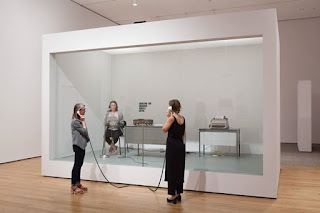Banana is a subject that really matters
more than you think; don’t think about it as a source of protein, it is more
than a fruit.
Musa
sapientum gives to the world more than a fruit, it gives a symbol, a symbol
that was used through the ages and
became a symbol for sexuality, apes, even the banana skin became a symbol of
bad luck, karma’s way of making you slip, one of the comedy over used clichés, and
even a title for one of Chris Rhea’s songs, “God’s great banana skin”.
In visual arts, bananas started to be used
in the early 20’ by artists like the American photographer Imogen Cunningham;
later in the 30’s Georgia O’Keeffe made some works based on enlarged banana
flowers, in the 30’s the avant-garde graphic designer Edward McKnight Kauffer
created a series of banana based works using lithography, examples of artists
using bananas as source of inspiration
are countless. In the 60’ bananas started floating around
Claes Oldenburg’s head too when he started to make sketches of a banana for a
monument, Colossal Monument for 42nd
Street: Banana. Bananas will never let go of Oldenburg, or Oldenburg will
never let go of bananas, fact proved by his 2002 show at 534 West 25th Street in New
York where he exhibited his works of
banana peels made in collaboration with his wife Coosje van Bruggen.
Examples of artists using banana, as I said
before are countless, from Warhol’s bananas to Dieter Roth’s “Pocket Room”, a series
of works that consists in putting slices of banana on cardboard, packed in
small plastic boxes small enough to fit in a pocket.
So, yes, bananas are a subject of interest
for everyone of us one way or the other and, in my opinion, it had a
considerable impact on our culture and art.












